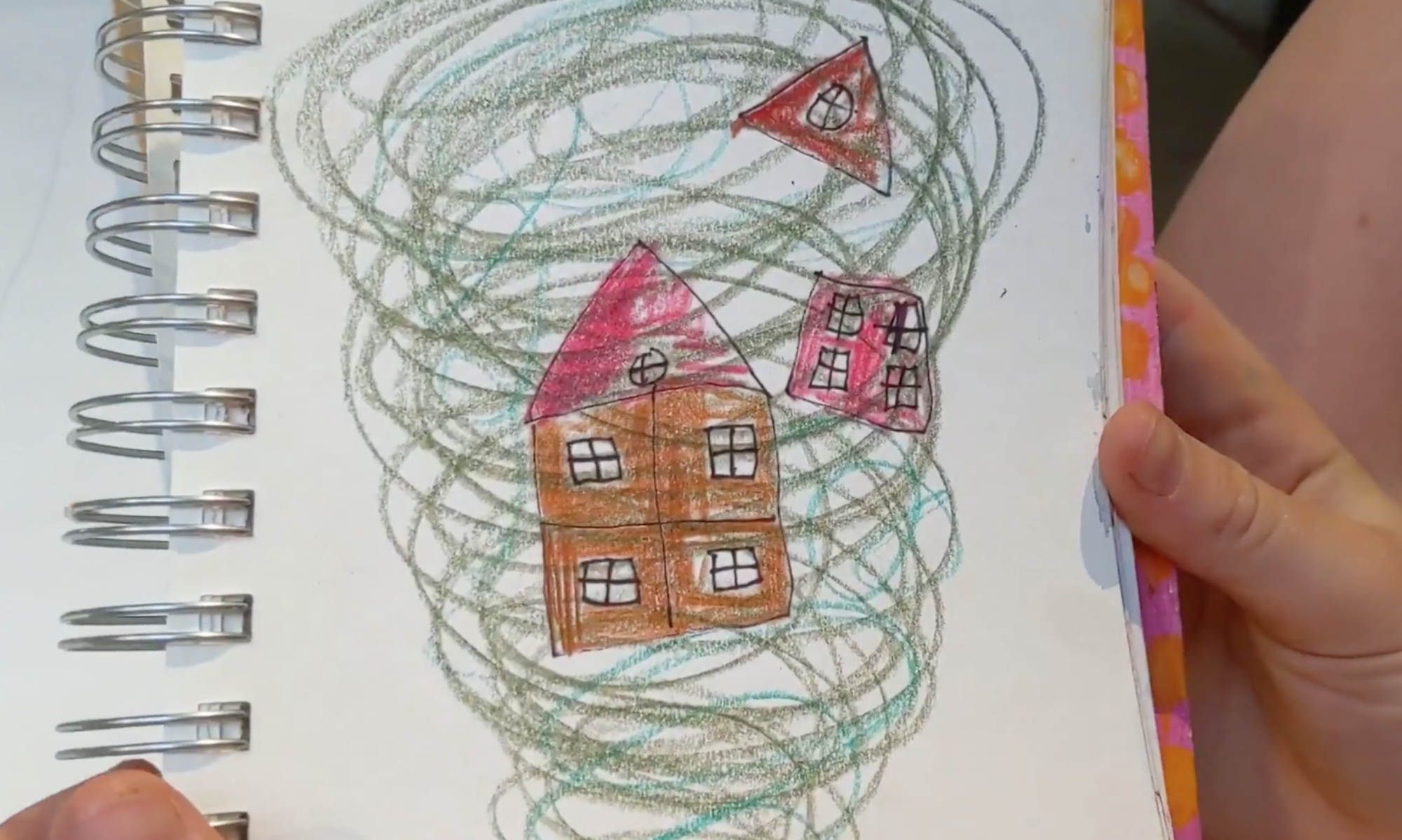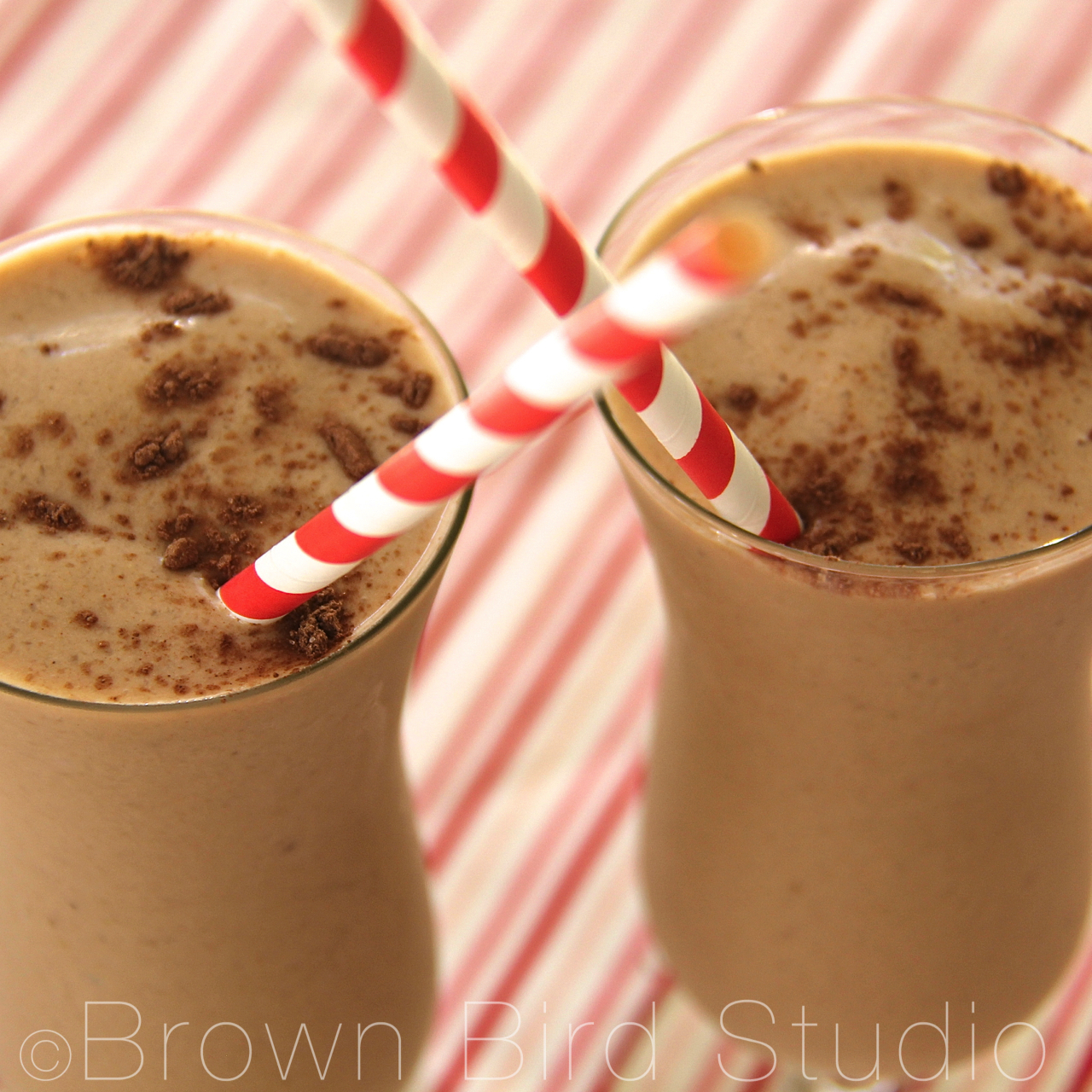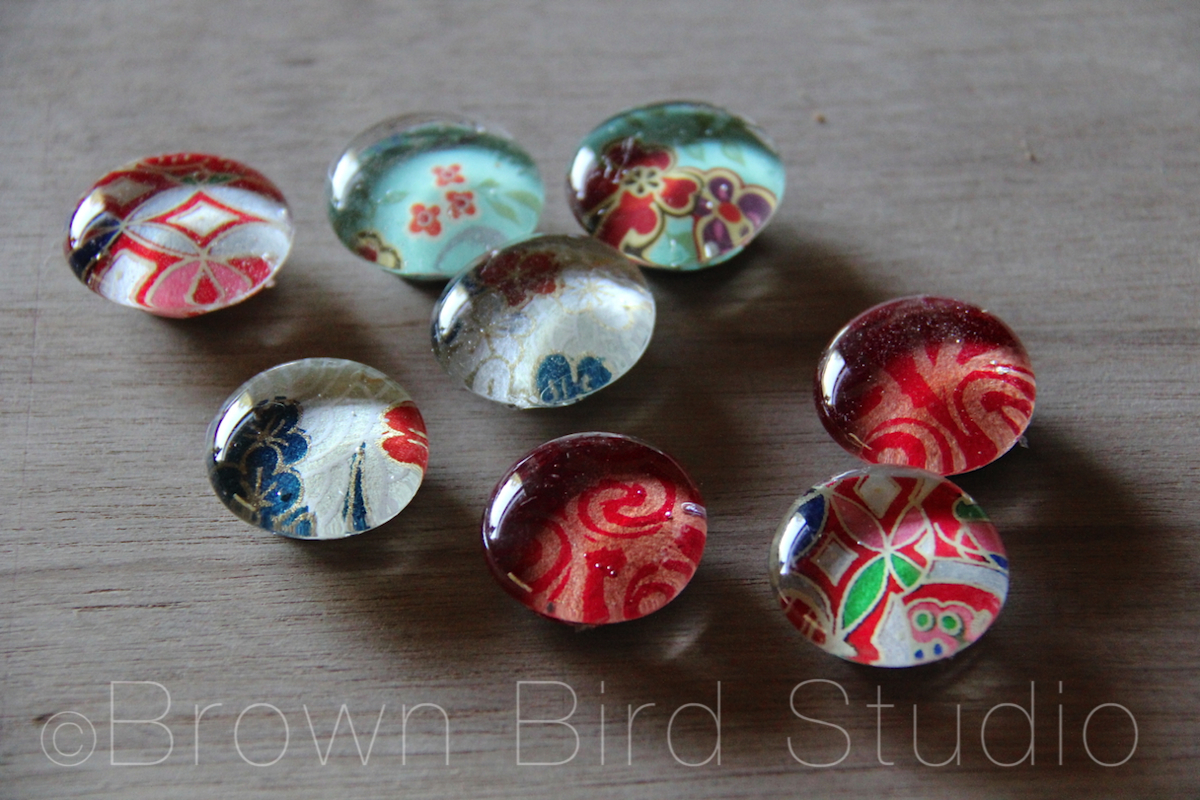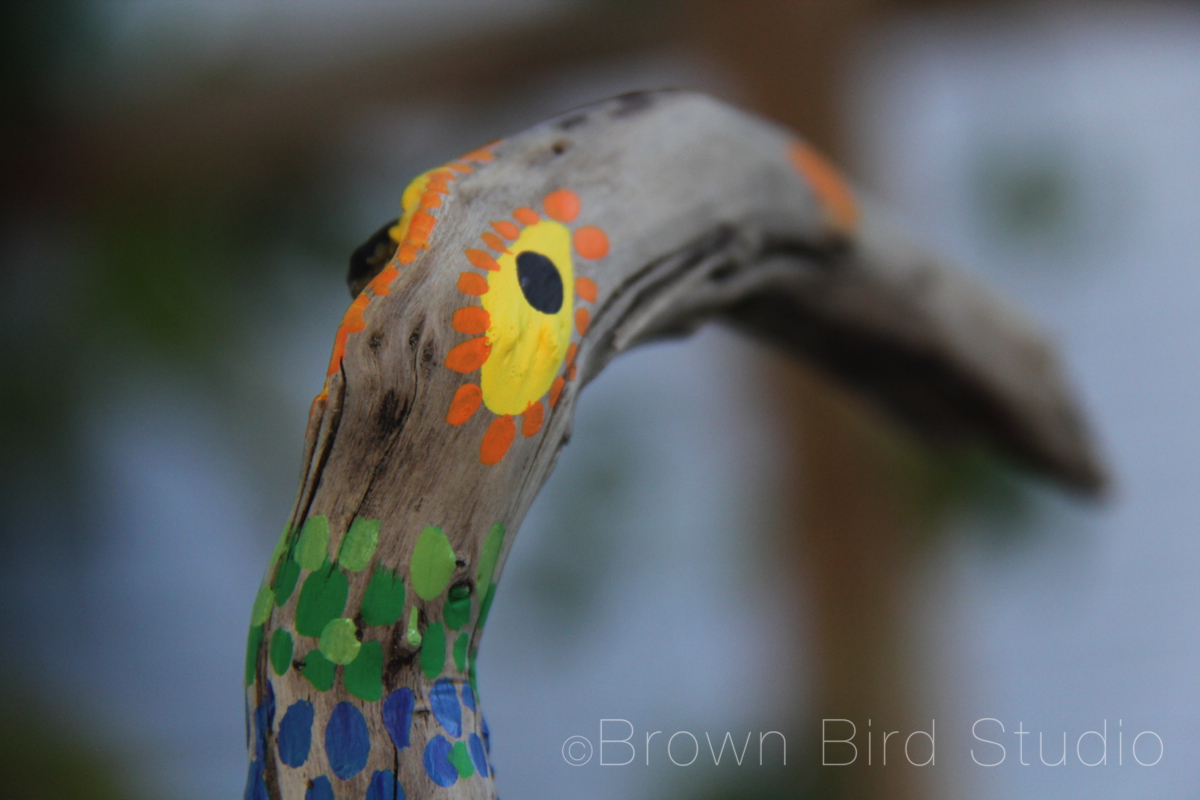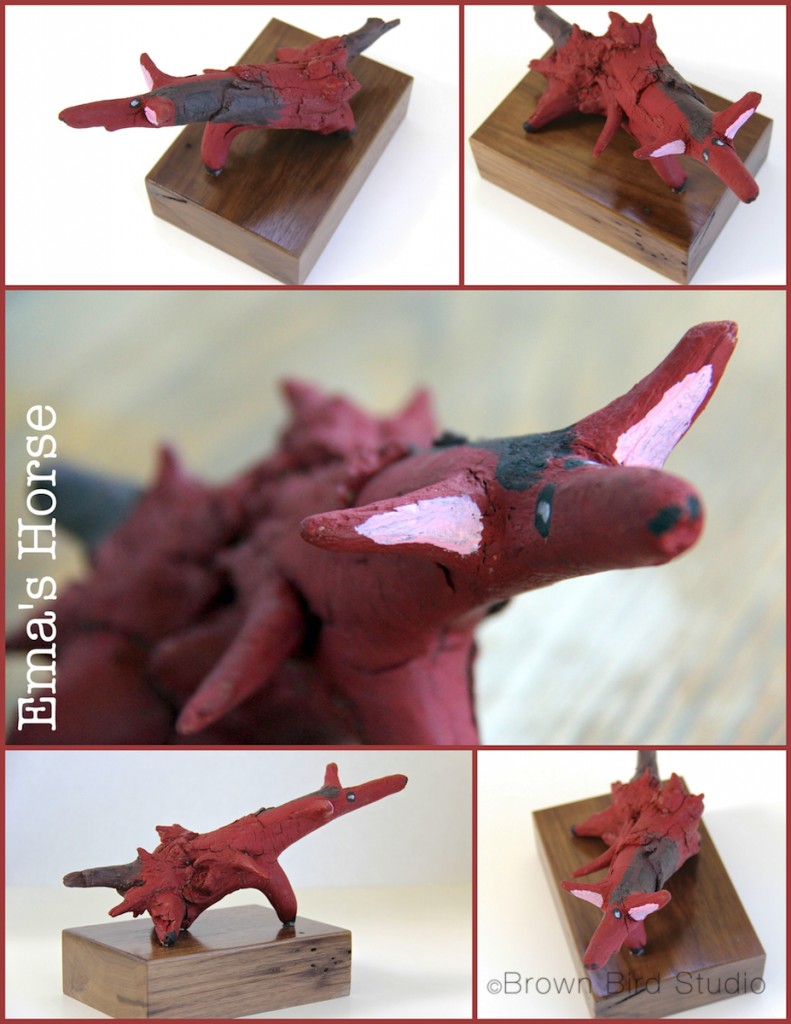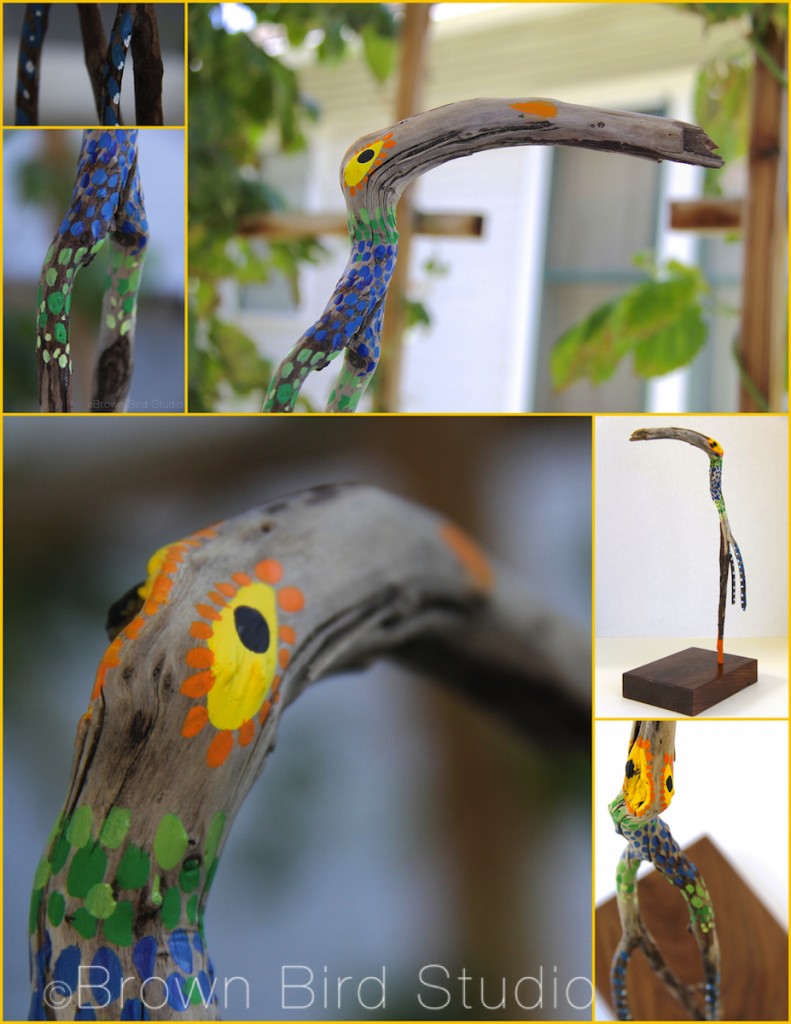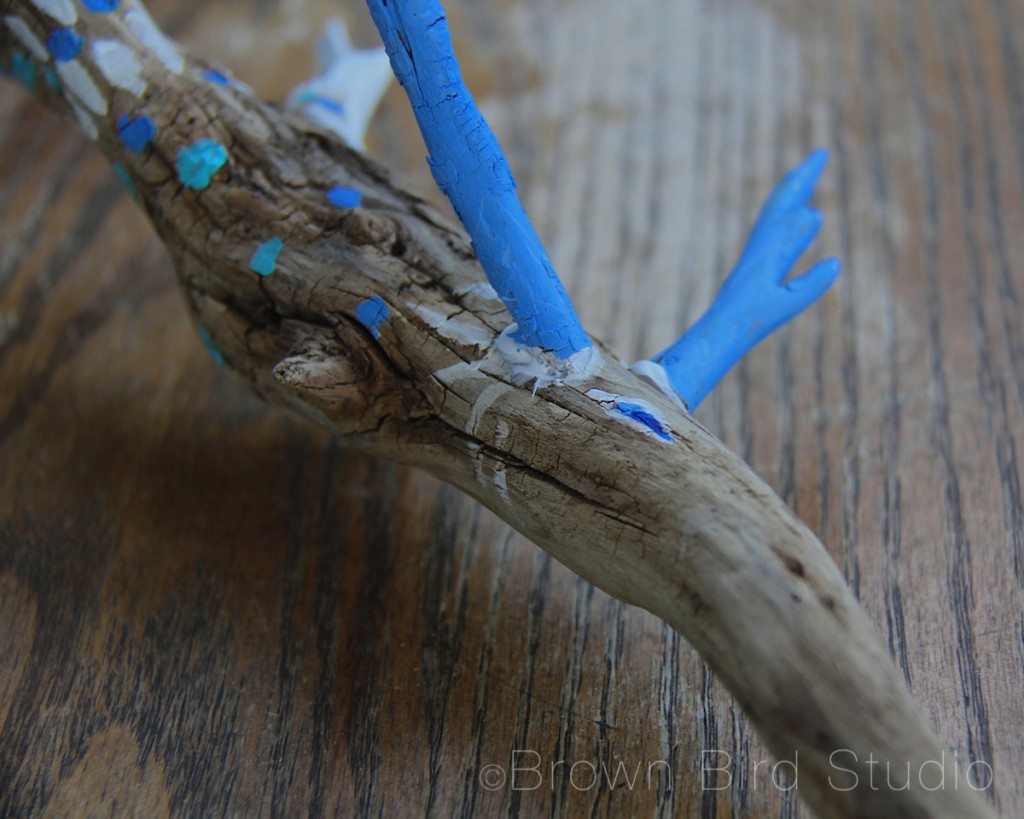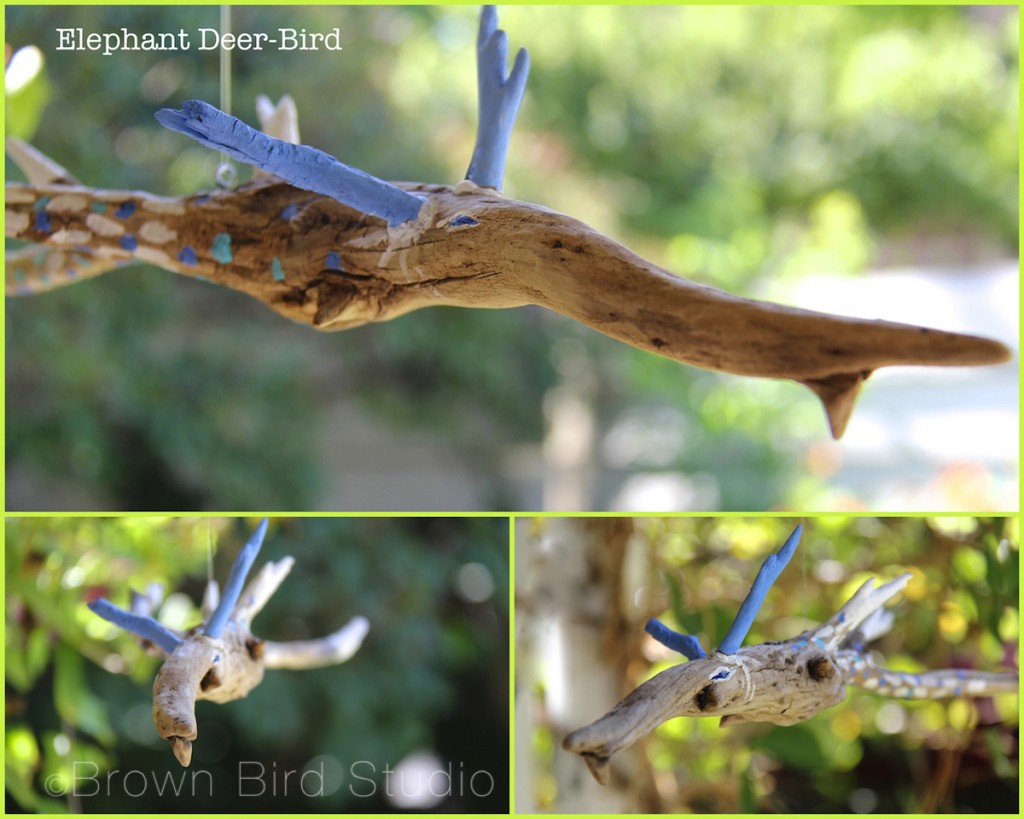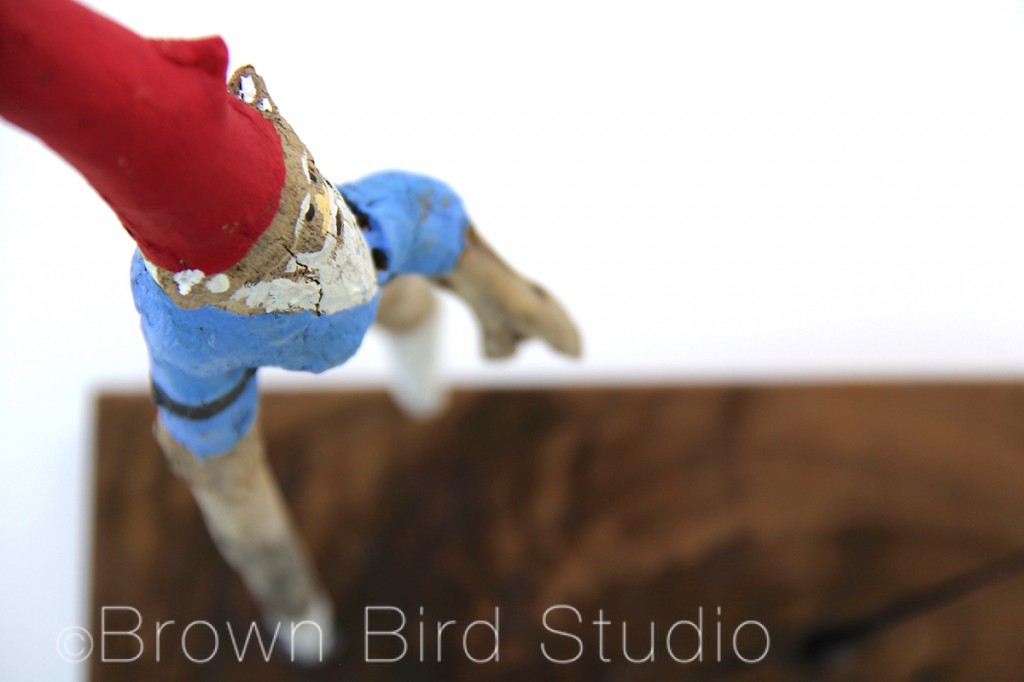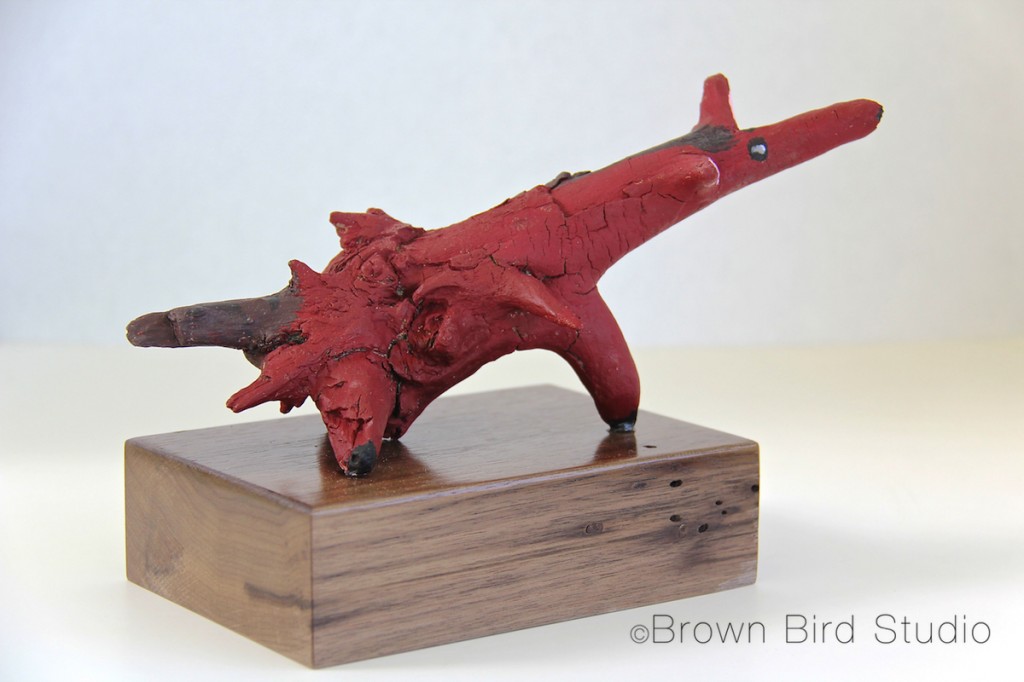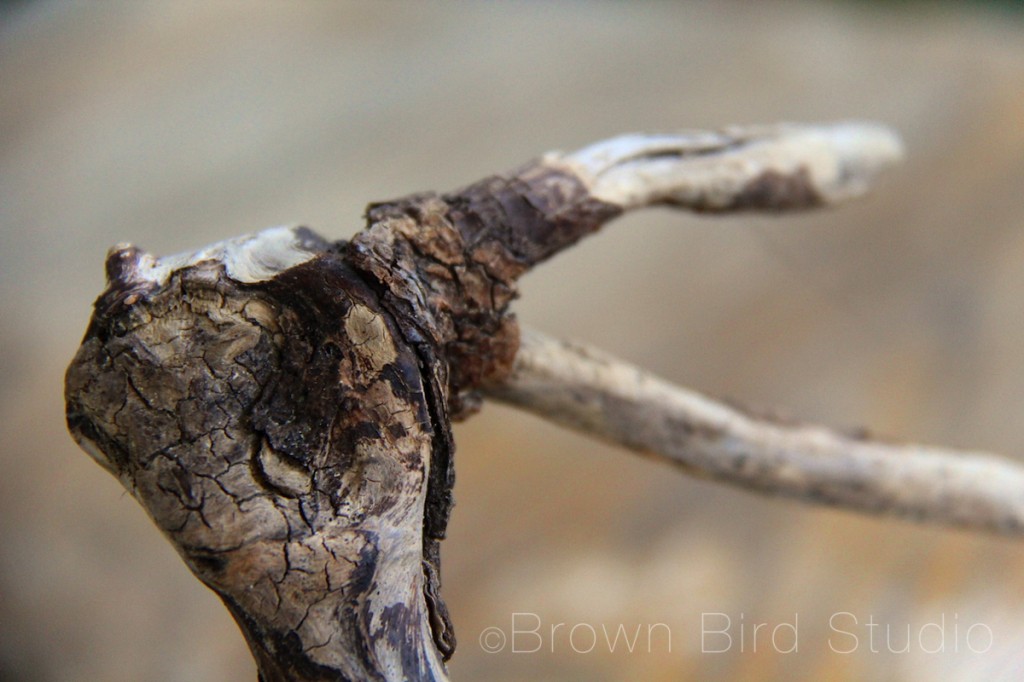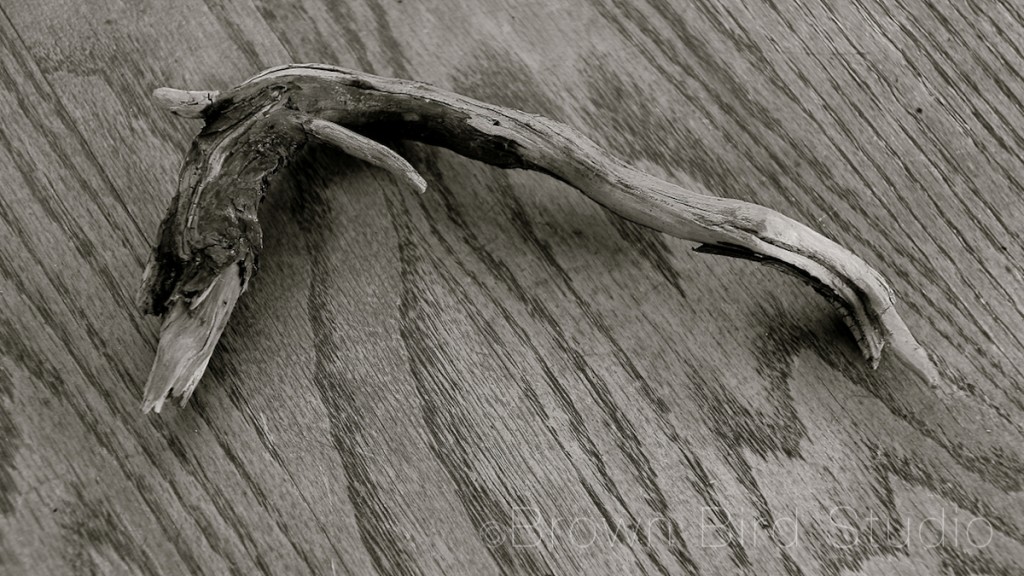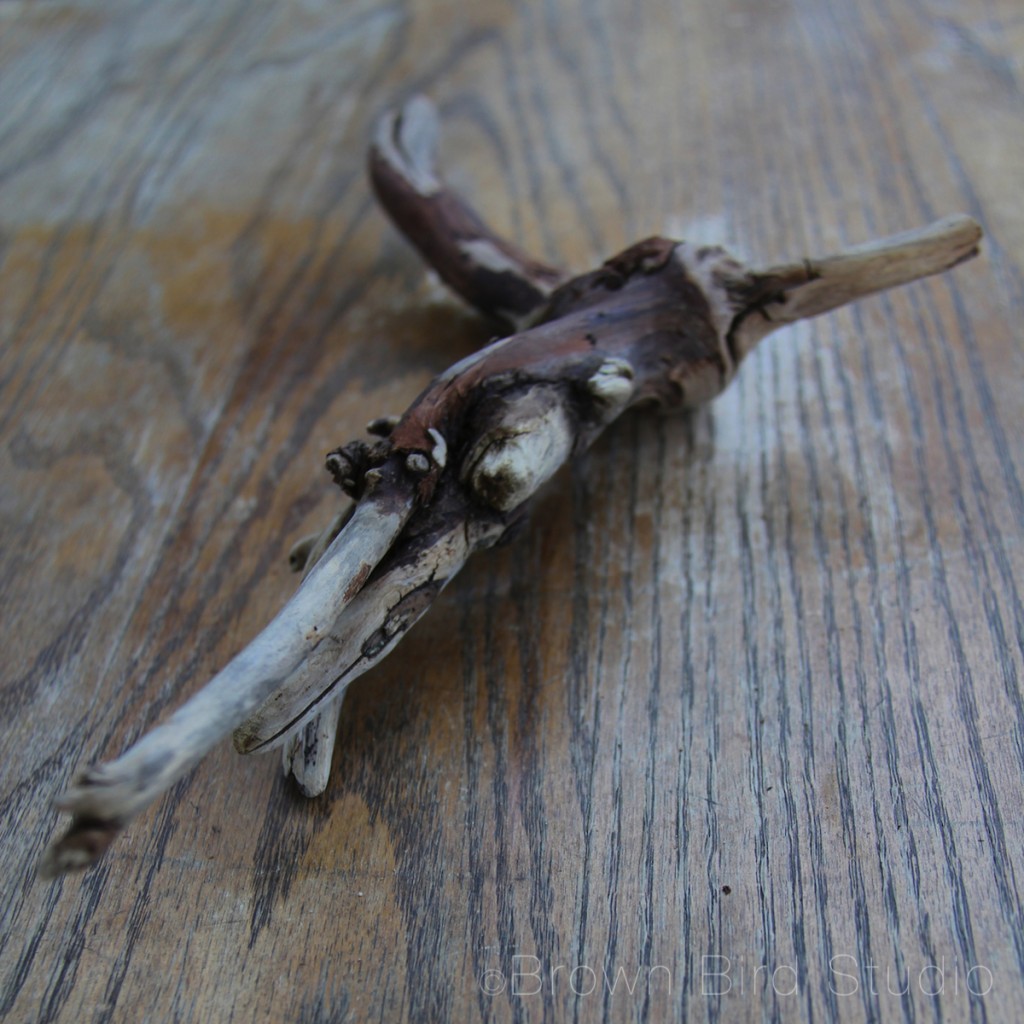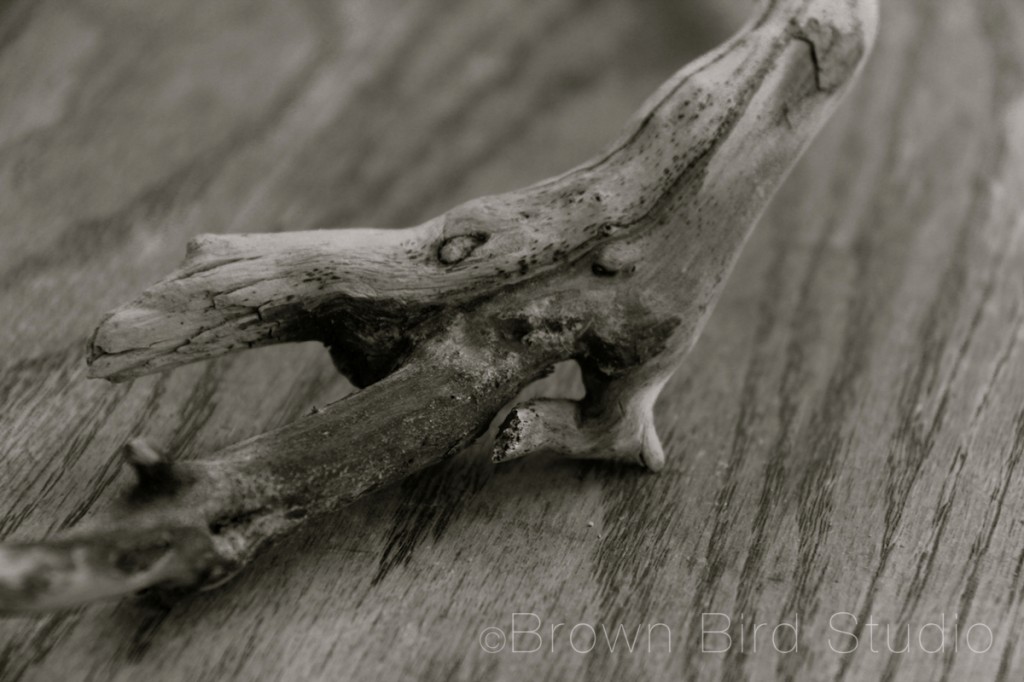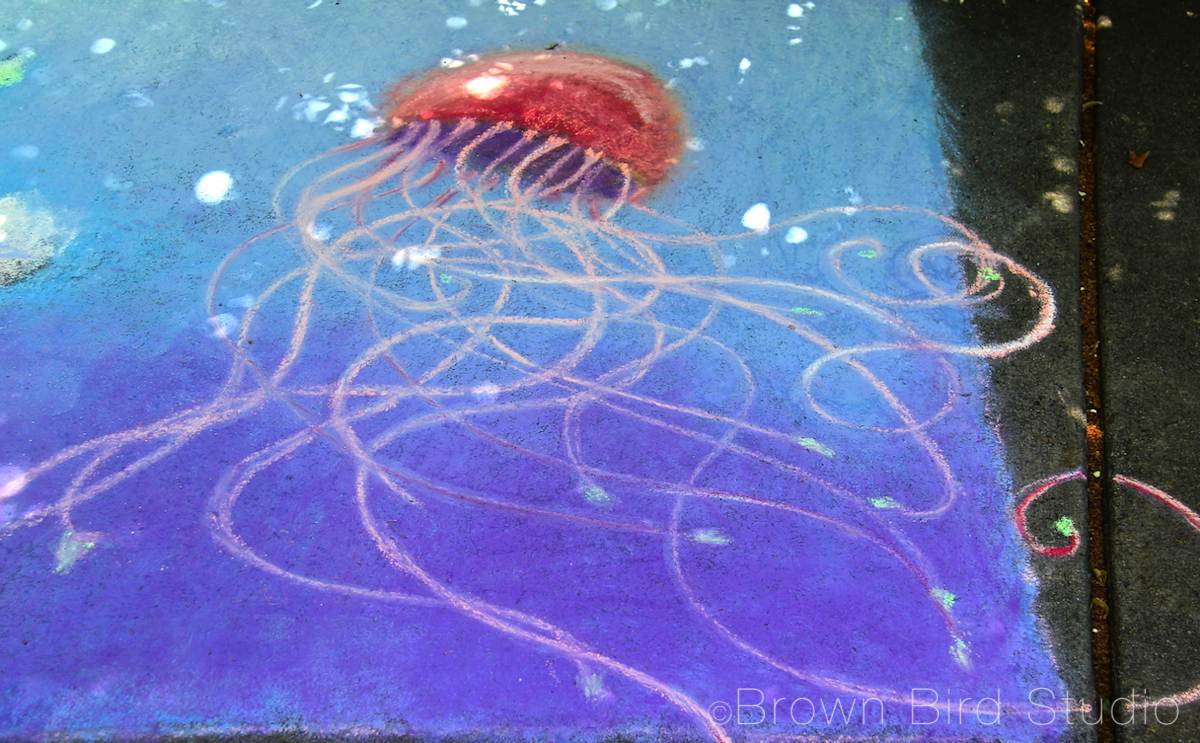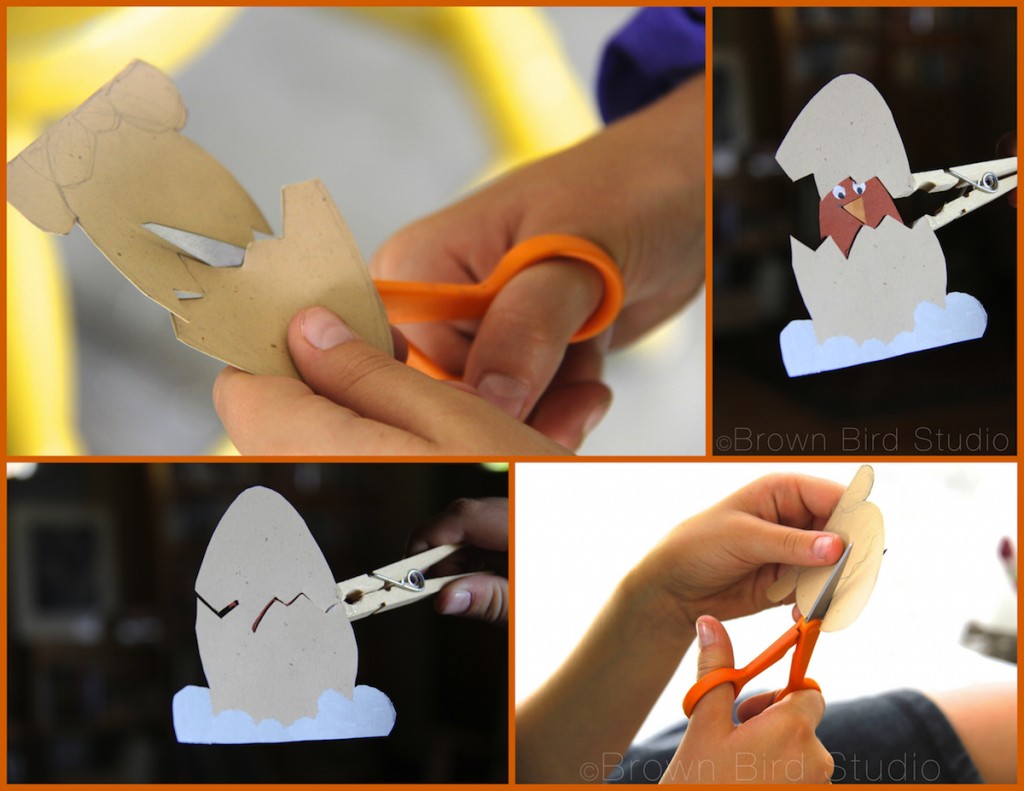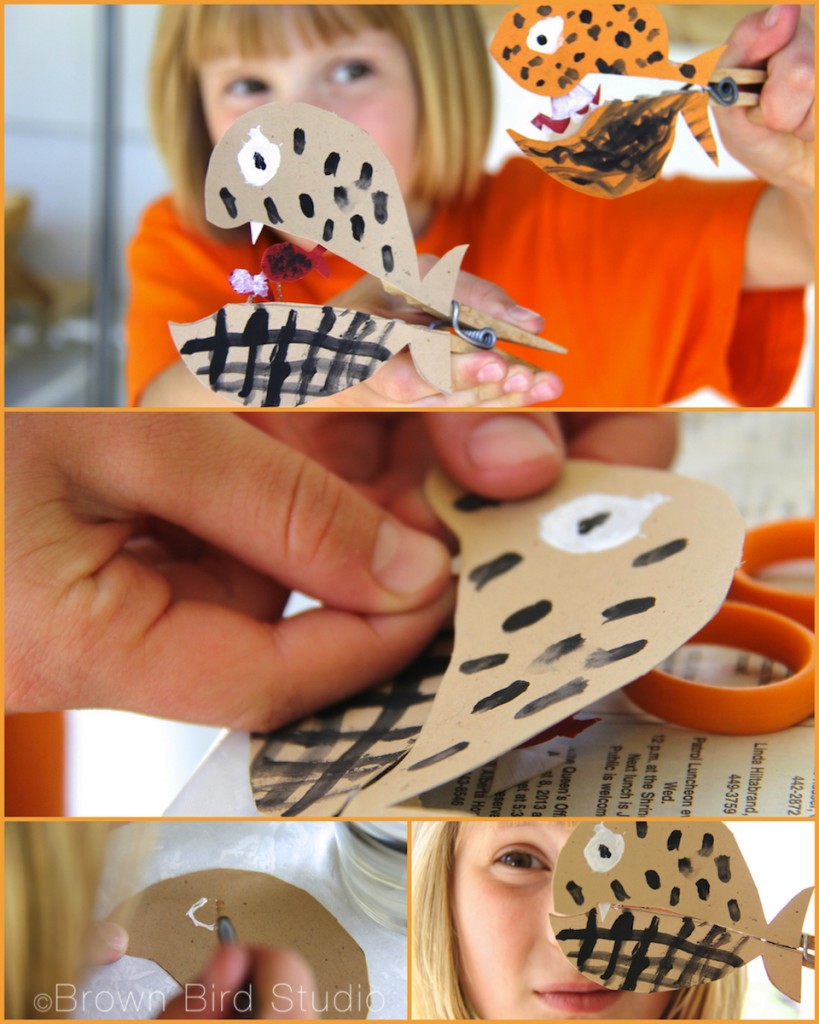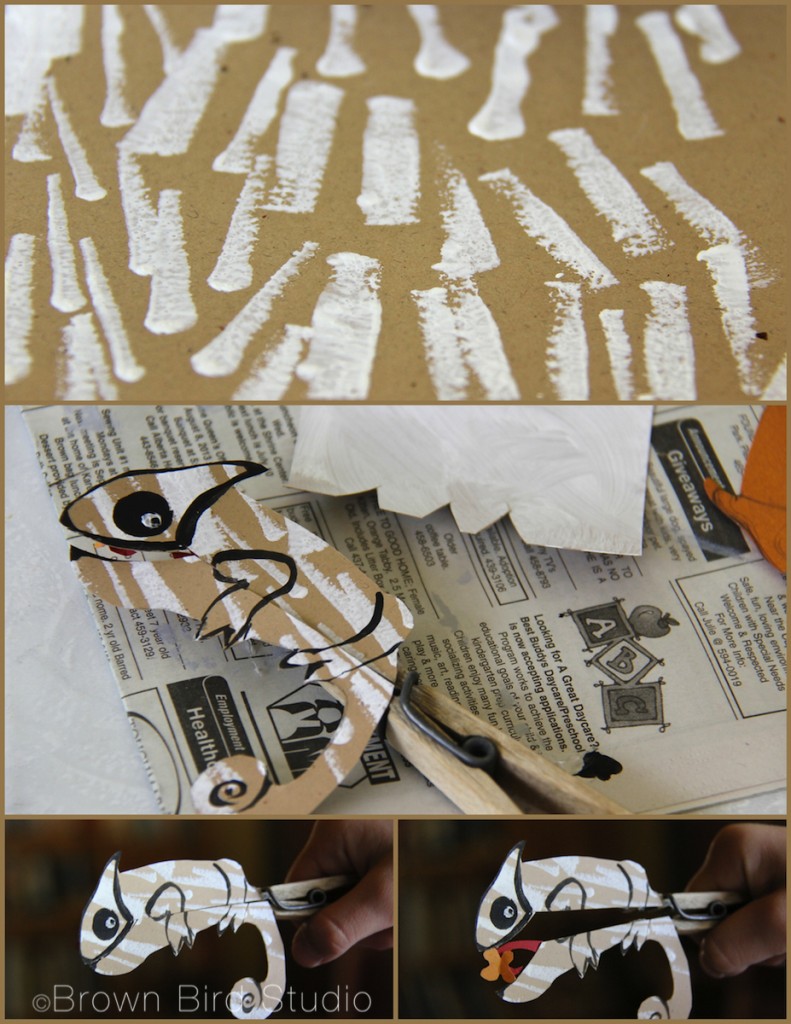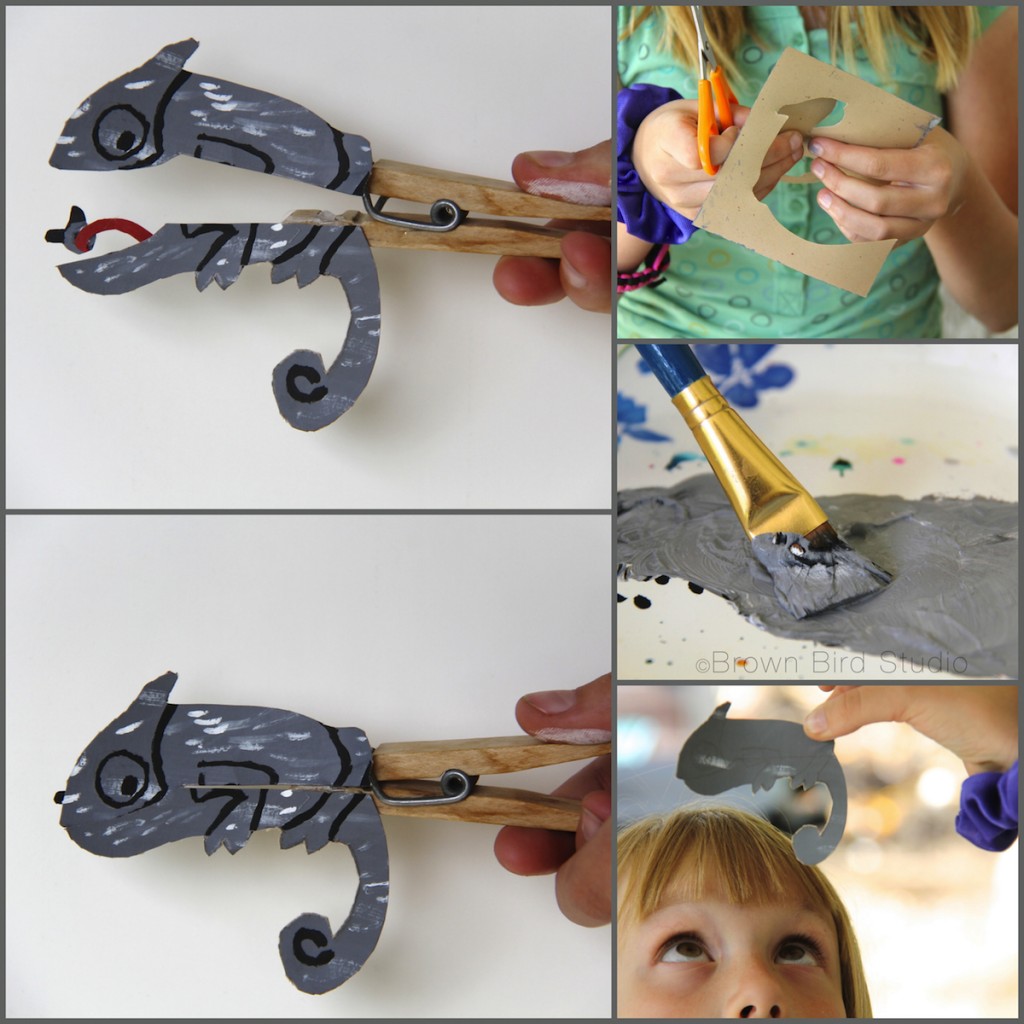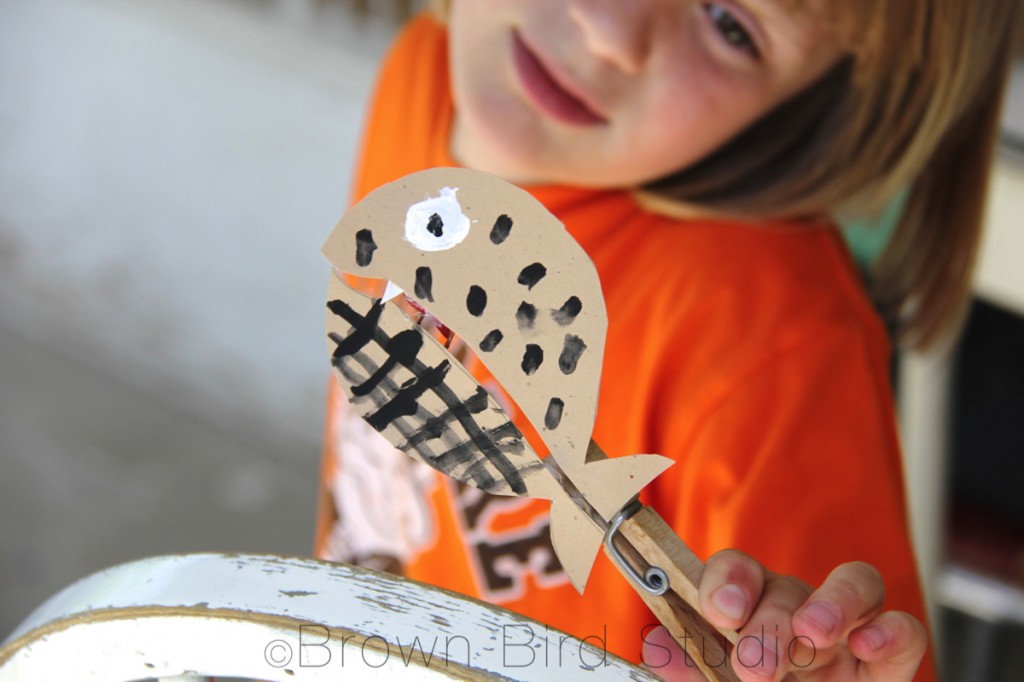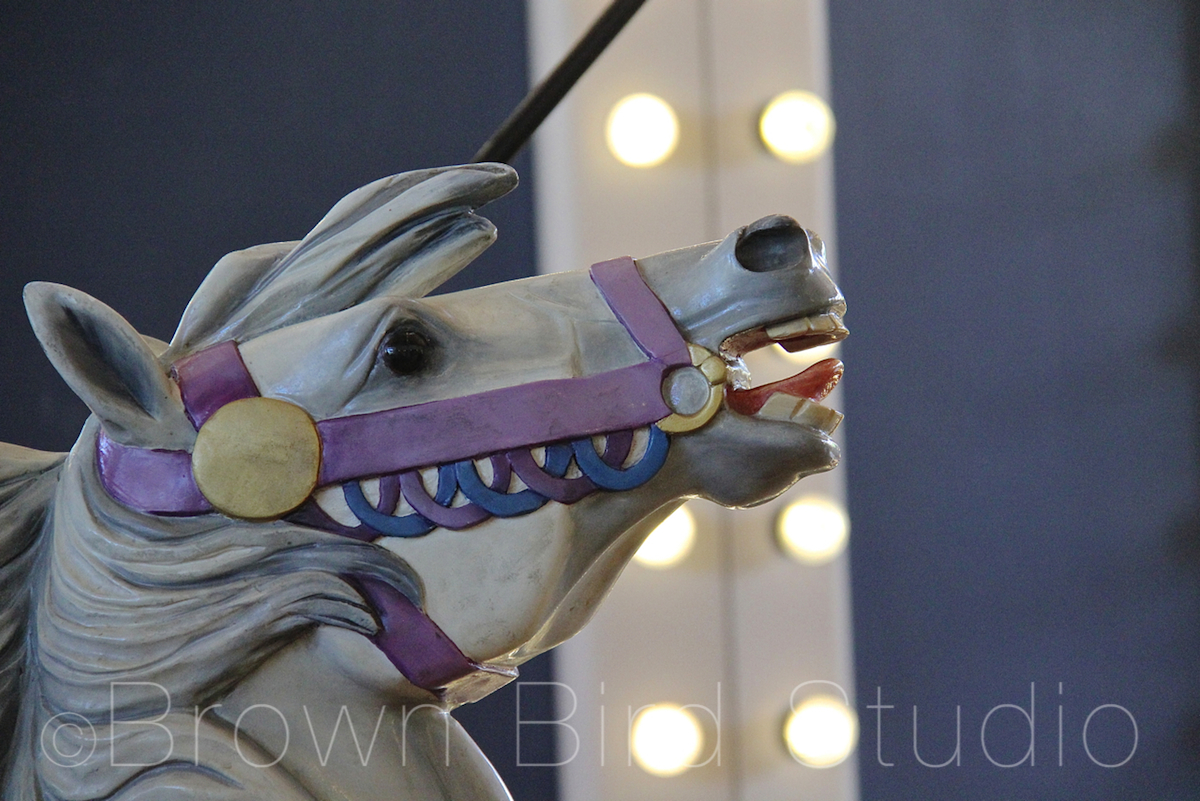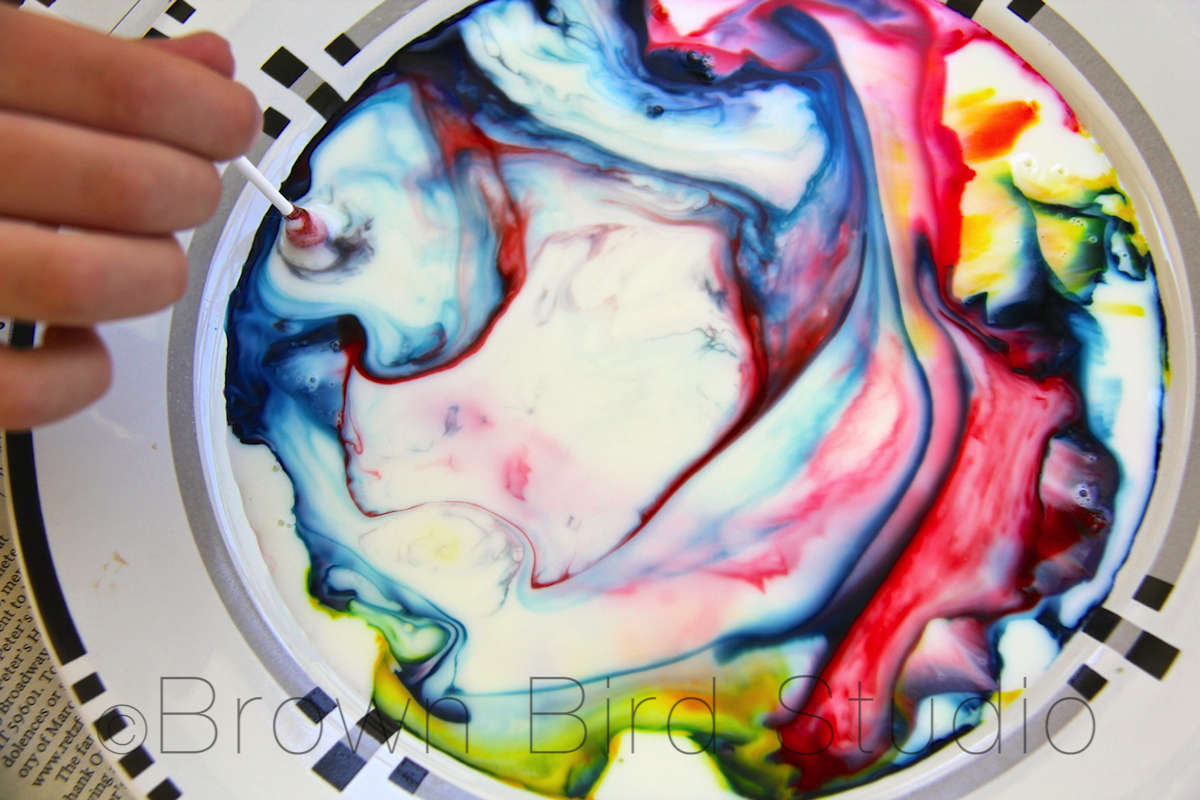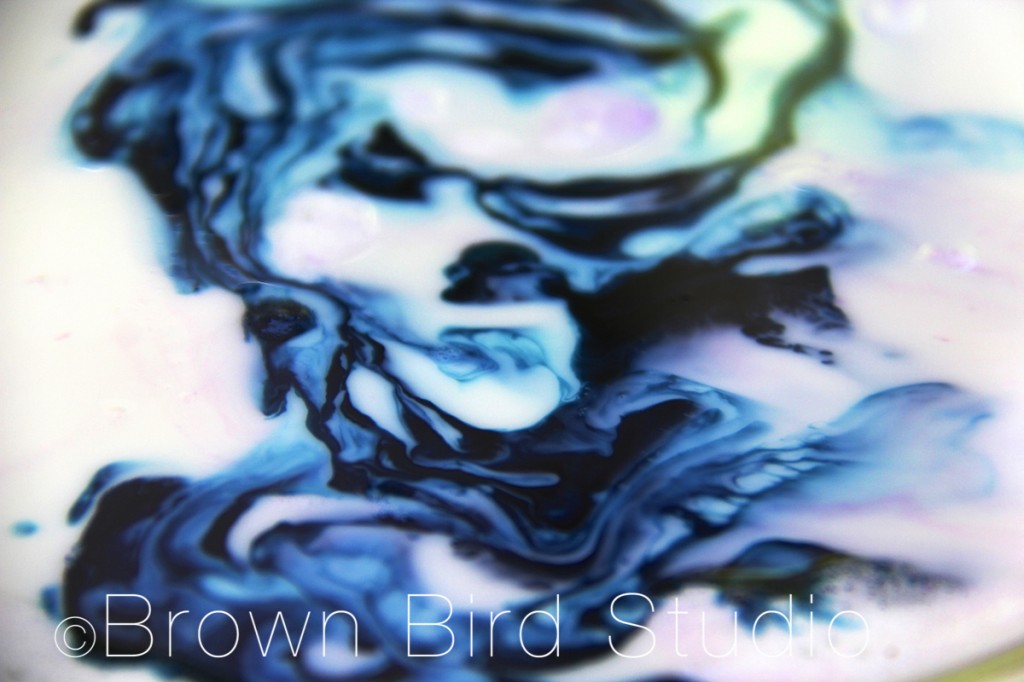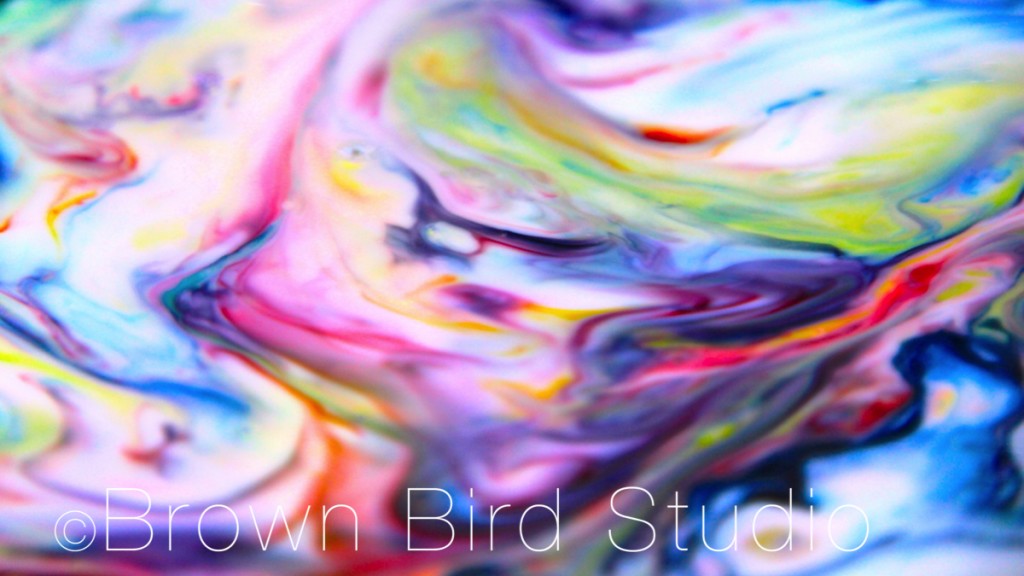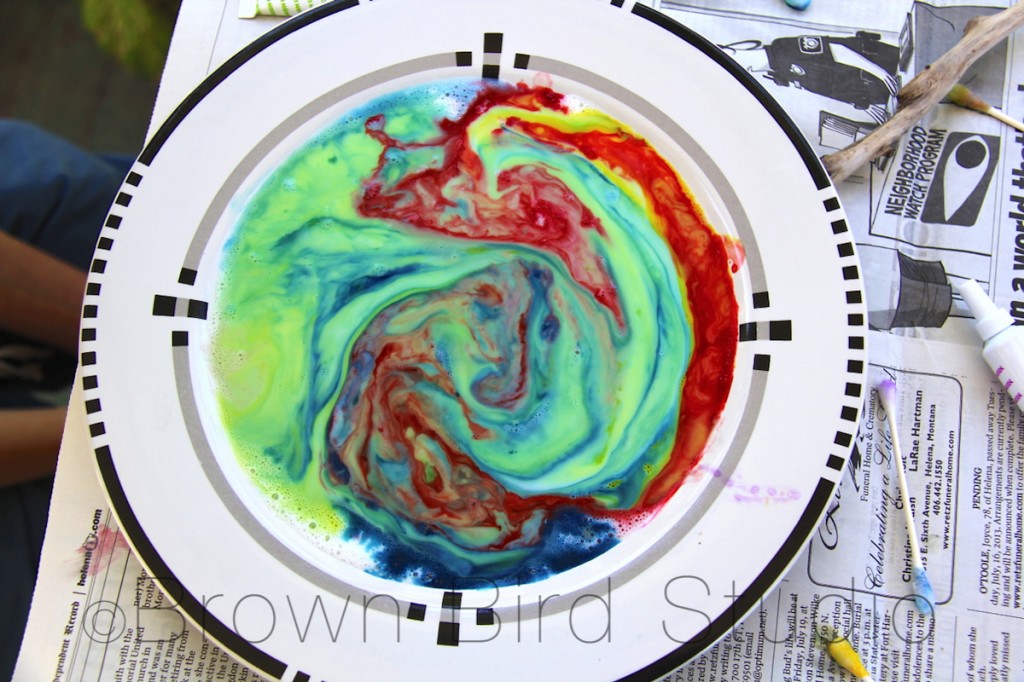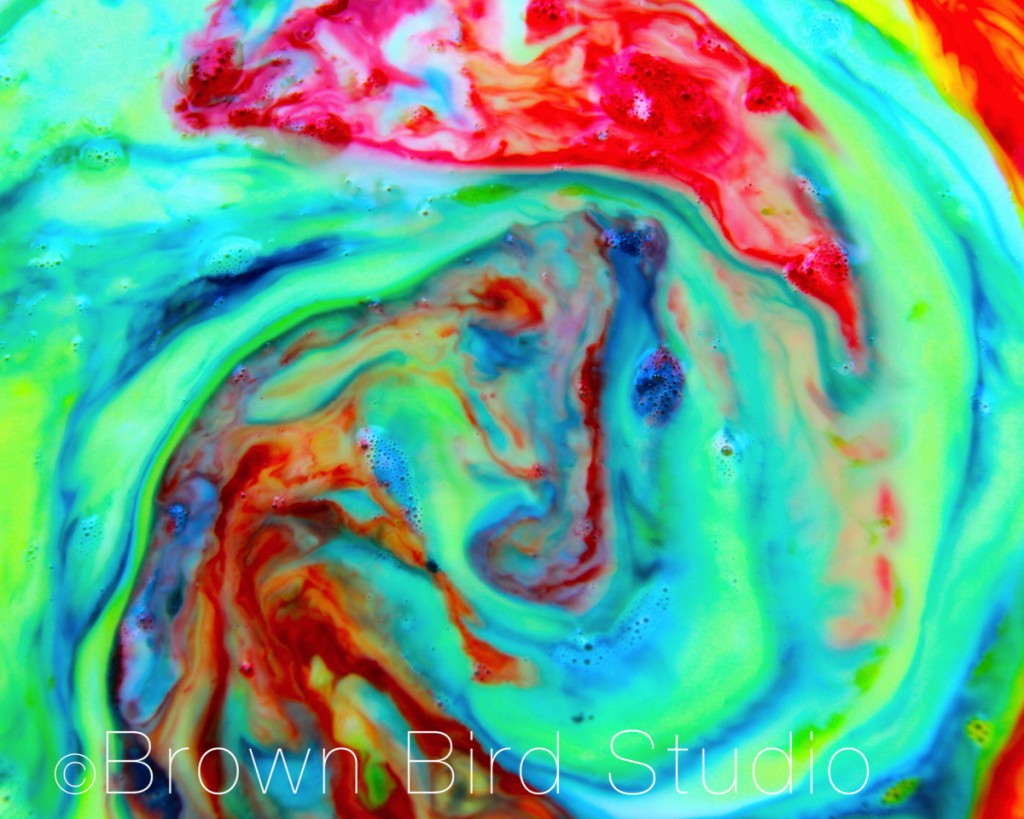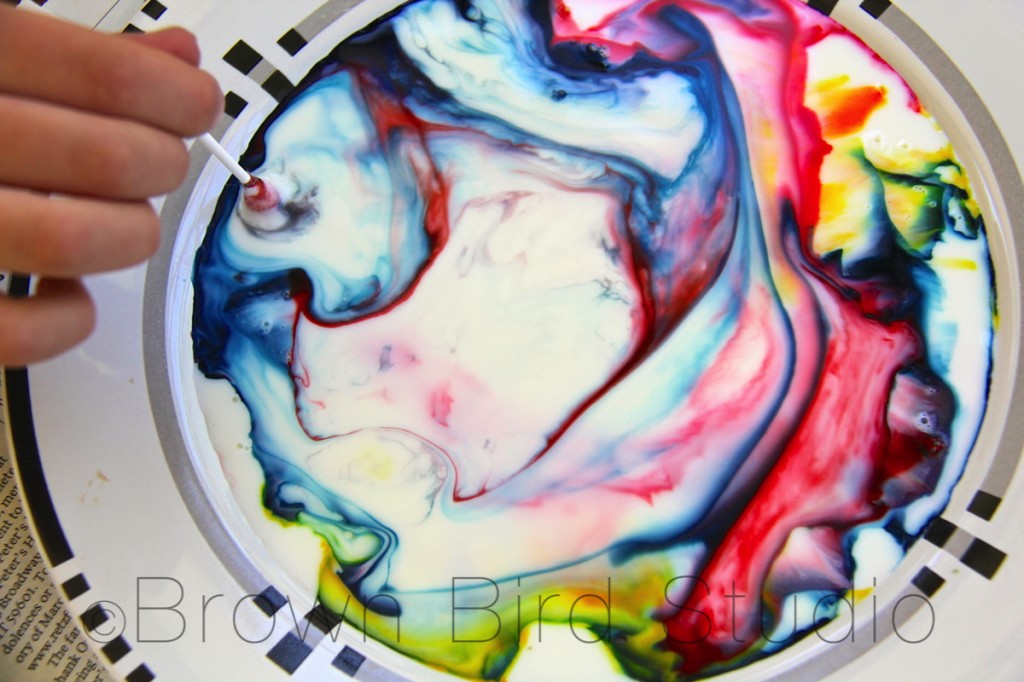So Easy: DIY Marble Magnets
Kid’s Art: Root Creatures
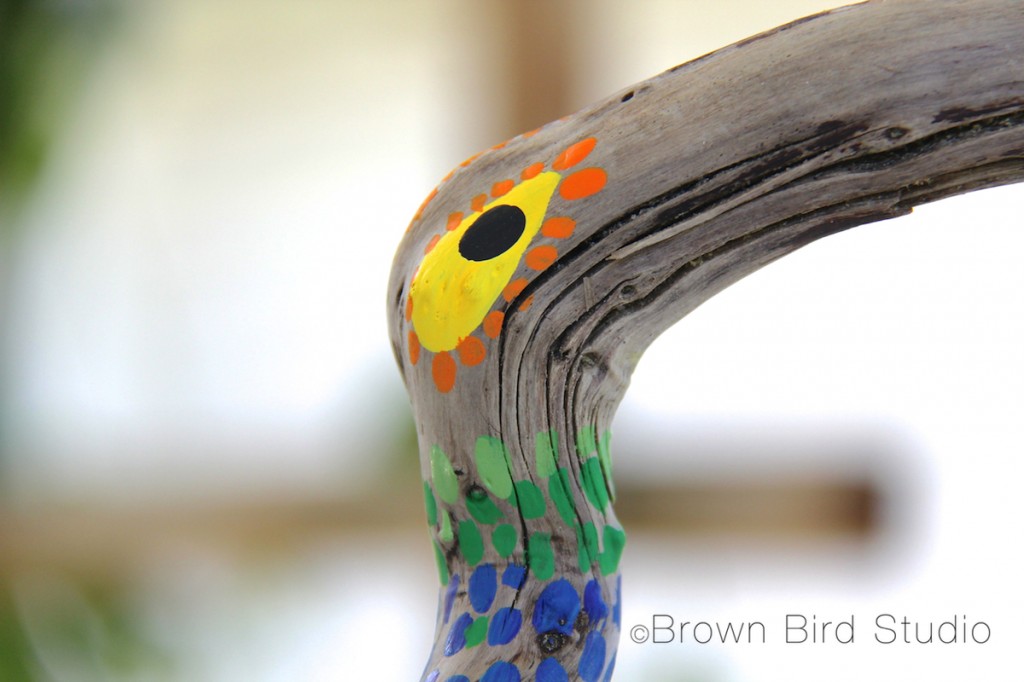 Ema, Adia and I made some really cool creatures using roots we found on the lakeshore. We picked them up because we thought each of these looked at least vaguely critter-like. Today we painted several of the roots to try to bring out the little features in the wood that looked like something or another. How do you like them now?
Ema, Adia and I made some really cool creatures using roots we found on the lakeshore. We picked them up because we thought each of these looked at least vaguely critter-like. Today we painted several of the roots to try to bring out the little features in the wood that looked like something or another. How do you like them now?
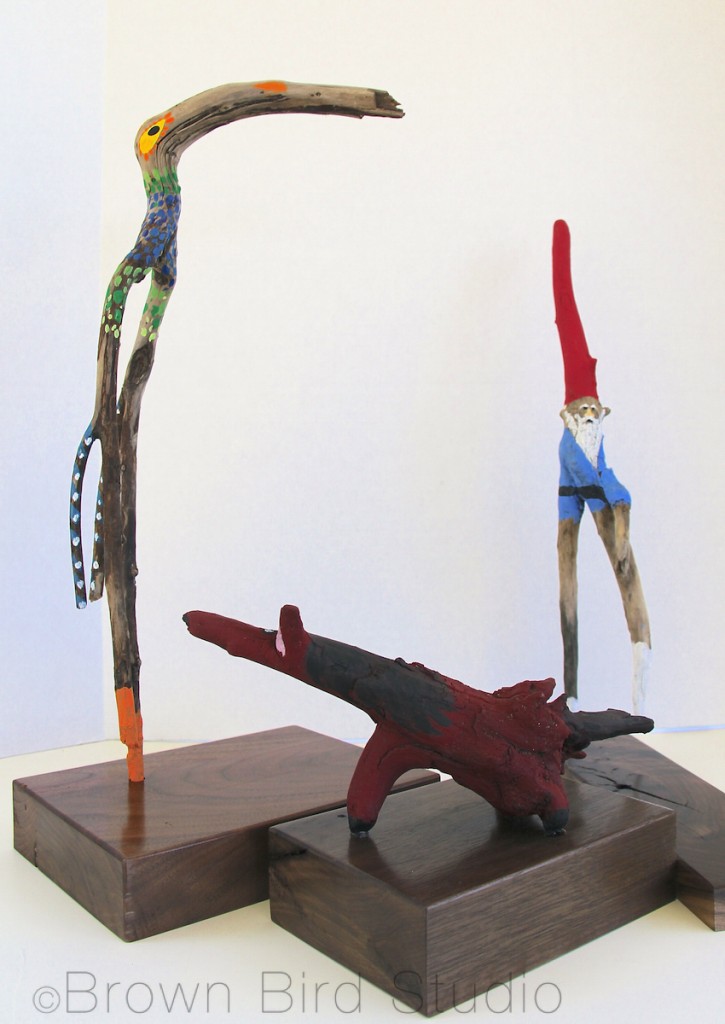 We have a horse, a gnome, an elephant-deer-bird, and another bird — a long-legged crane.
We have a horse, a gnome, an elephant-deer-bird, and another bird — a long-legged crane.
The following tutorial was written by Ema and Adia:
Have you ever wanted to make an imaginary creatures? Well here’s how. All you need is a few sticks and some paint. You can make whatever you can imagine when you look at the sticks.
You will need:
- sticks, driftwood or roots
- hot glue*
- acrylic paint**
- brushes
- something to use for bases for the creatures that will stand up*** …. or
- tiny eye hooks and some monofilament for creatures that will fly (hang)
I got a funky root and I kept turning it and turning it and looking at it from different angles and then I saw that it looked like a horse. So I painted it to look like a red roan horse, specifically my favorite horse, Rosebud, who lives at my Grandma’s house in Anaconda. I glued mine onto the base instead of drilling a hole because it stands up by itself. — Ema, age 10
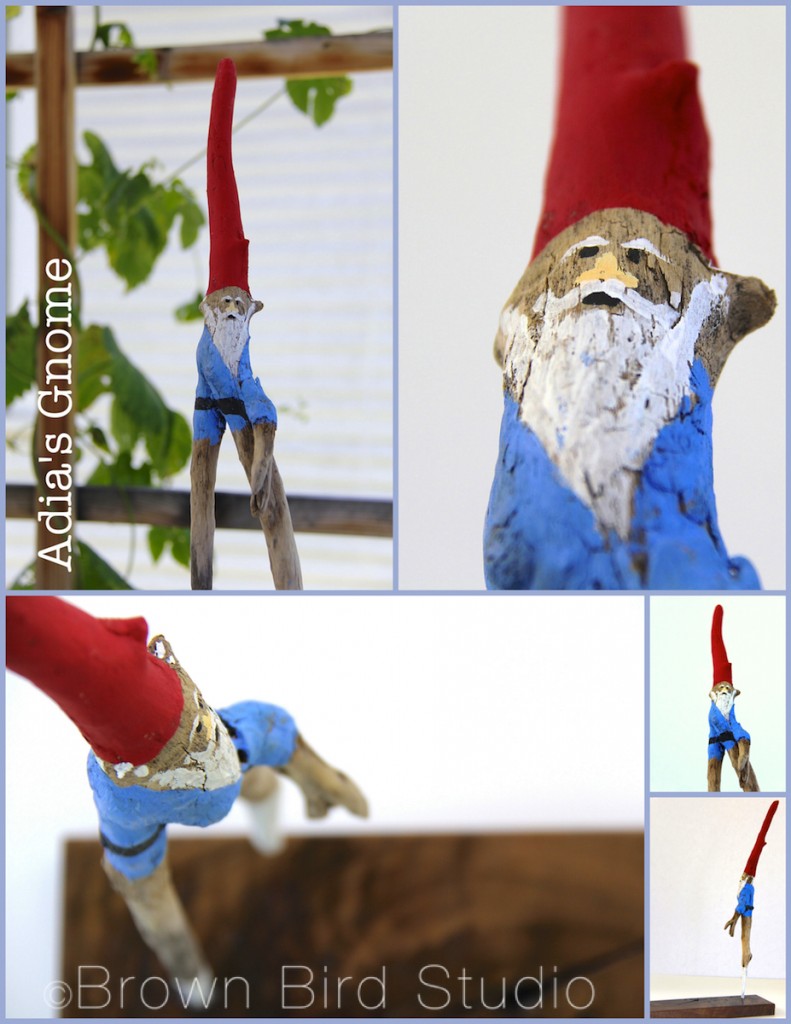
I made a gnome. A gnome is a little person with a beard. Santa Claus is a gnome. My gnome has a really tall red hat and is walking across the log that is my base. One leg is shorter than the other because he is walking. He also has a really long white beard and tall white boots. I drilled a hole in the base and glued my gnome’s longest leg into the hole. He looks like Santa. — Adia, age 8
One of my roots looked exactly like a long, curved-bill crane so I made a fantasy bird that I named, an “oo-ooga crane.” This is the sound it makes when it’s happy. It has green and blue feathers with white spots. Also some yellow and orange eyes. I glued one of the crane’s legs into a hole in the walnut base. — Maureen
My other root reminded me of an elephant with wings. It has big long trunk, two skinny wings and a tail. I added little antlers so it’s an elephant-deer-bird. I painted the antlers blue because the Huichol Blue Deer is special to me. This one hangs from the ceiling because it’s flying. I screwed in a tiny eye-hook and hung the bird by a piece of monofilament. — Maureen
NOTES FROM THE TUTORIAL AND SUPPLY LIST:
*We used a little hot glue to attach odds and ends of roots to our creatures.
**For painting the creatures, you don’t have to completely cover the surface of the wood with paint. Leaving some of the natural wood showing looks really cool.
***If you want to make bases, cut some nice wood in a square or rectangle or any shape. Sand it so it’s nice and smooth. Sand the edges to make them roundish so they aren’t sharp. Figure out if you want to drill a hole or just glue on your creature onto the base. We made our bases out of scraps of walnut wood, the trees that grow actual walnuts on them.
Below, we have a few other roots we haven’t painted yet. We are going to keep making these creatures. One of these roots is going to become a flying dragon with a tail made of smoke and fire coming out of its mouth. What do you see in these? Please let us know in the comments.
Public Art of a Temporary Nature
Kid’s Art: Clothespin Puppets
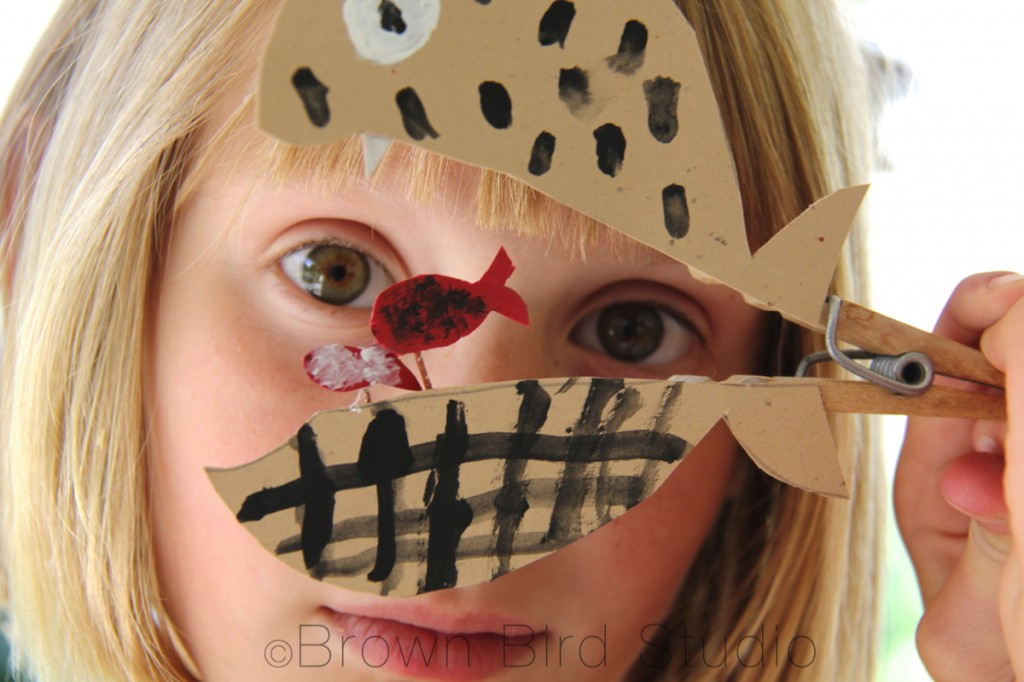 We had an idea on our Summer Fun Pinterest board both girls wanted to make, so here’s what we did:
We had an idea on our Summer Fun Pinterest board both girls wanted to make, so here’s what we did:
Clothespin Puppets
What you need:
- clothespins (the kind you pinch to open)
- heavy weight paper or lightweight cardboard *
- acrylic paints, markers or other tools to decorate the puppets **
- hot glue, regular glue (like Elmer’s) ***
- scissors
- paint brushes if you decide to use paint
- Decide what you want to make. We liked the idea of a mouth opening to reveal something inside. Ema also made an egg that “hatches.” You could choose to make a person whose mouth opens to show a word-bubble, or an envelope that opens to show a letter inside. We mostly got our ideas from this lovely Flickr user, Molas & Company, but I can think of lots more ideas… get creative!
- Draw your shapes on heavy weight paper and cut out.
- Cut through the middle of the shape so you have two halves to glue to the two parts of the clothespin
- Paint or otherwise decorate your puppet shape.
- Make the inside piece and attach to the bottom of the puppet shape.
- Figure out the best placement of the two halves, on your clothespin.
- Hot glue the two halves of your puppet shape onto the bottom and top of the clothespin.
Have fun with your puppets:
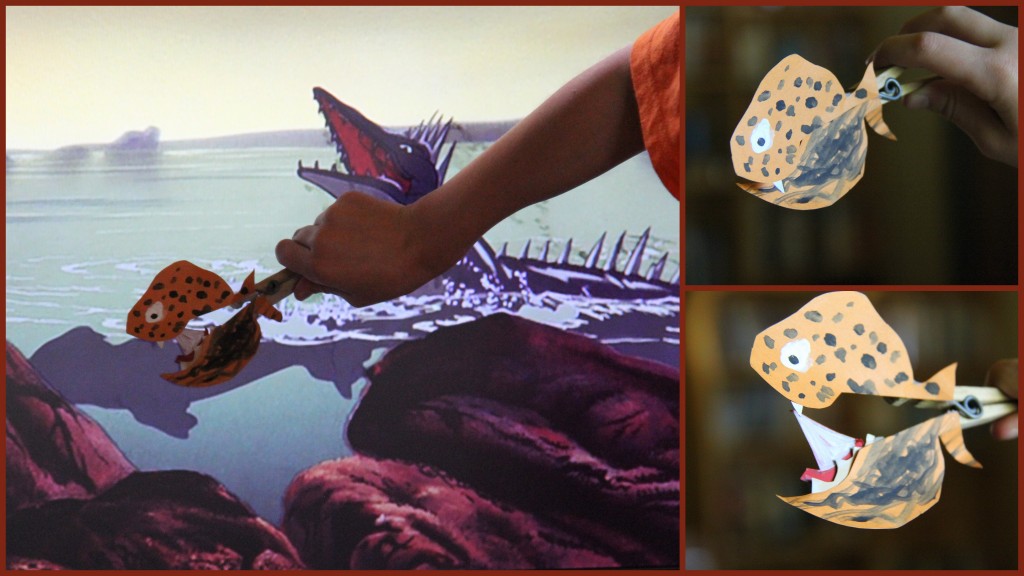
Adia played with her puppets while watching Fantasia, above. They are interacting with the movie. That’s what I call active-watching (and a brave puppet whale!)
* One of the puppets we made using a lighter weight paper because Adia liked the color. The paper sort of curled, so I would suggest a heavier weight (cover stock is perfect) paper.
** We used acrylic paints and I limited the girls to just black and white (and gray mixed from the two colors.) Use brushes or any other tool you can think of, to apply the paint. The tan chameleon has a texture made by stamping white paint with the tip of a sponge brush (see photo below.) You could also use a pencil eraser to make polka dots. Get creative!
If you use a heavy weight paper, or light cardboard, you could decorate the puppets with glued on buttons, sequins, beads, felt, bits of fabric, ribbons, or pieces of magazine photos. Very young artists could use stickers.
*** We used Elmer’s glue to attach paper bits to the paper puppet shapes. Hot glue to attach the puppet shapes to the clothespin. Use whatever glue you think will work best with the stuff you’re applying to your puppets.
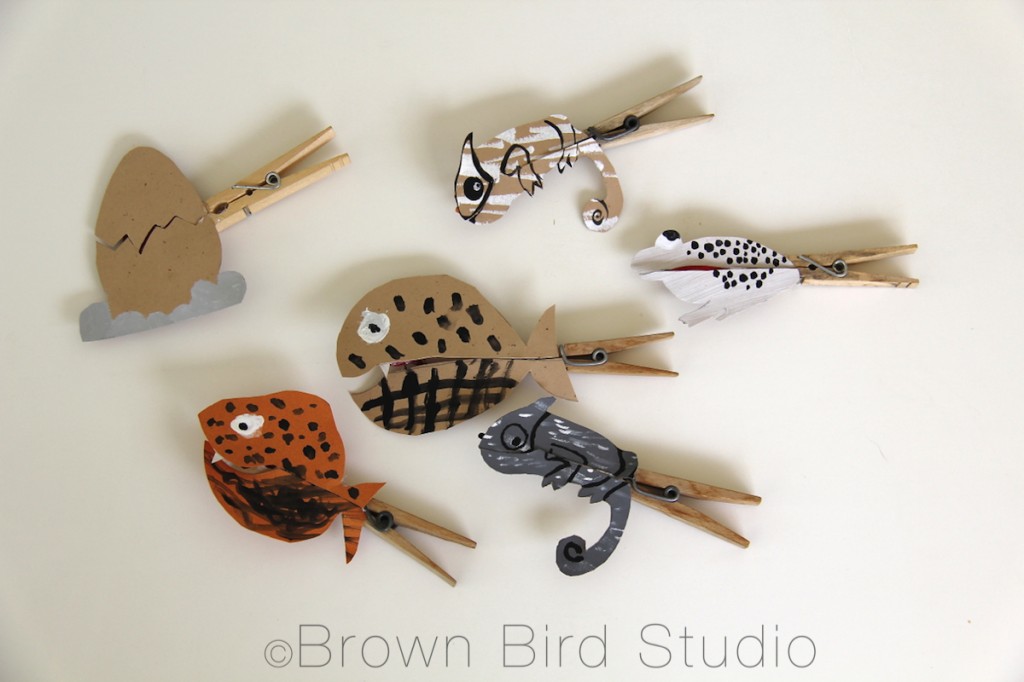
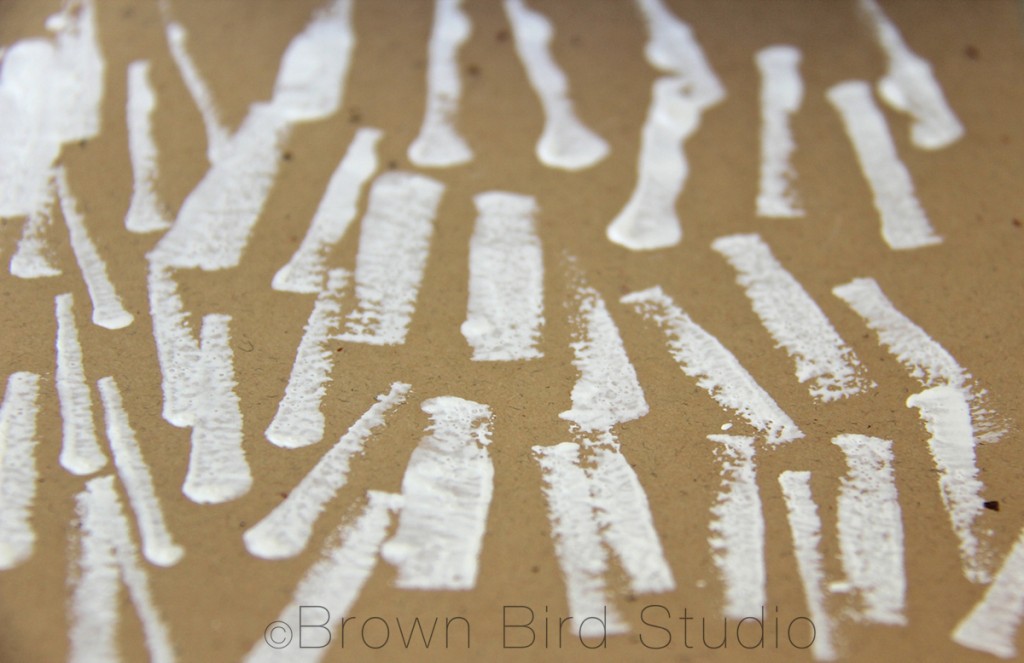
Links for Clothespin Puppets:
- Cute instruction sheet for clothespin puppets (scroll to the second image on the page)
- Fun alligator clothespin puppet
- Hatching Birds How-To
- Clothespins Galore! (or Clothes Pegs, as some say) I never knew there were so many different types of clothespins!
- Clothes Peg Dolls and other clothes peg crafts
- Super Simple Clothespin Person Puppet
- Sweet Clothespin Heart Puppet Valentine
Kid’s Art: Dribble and Blow Drawings
Carousel
Art and Science Smash-Up: Milk Swirls Paintings
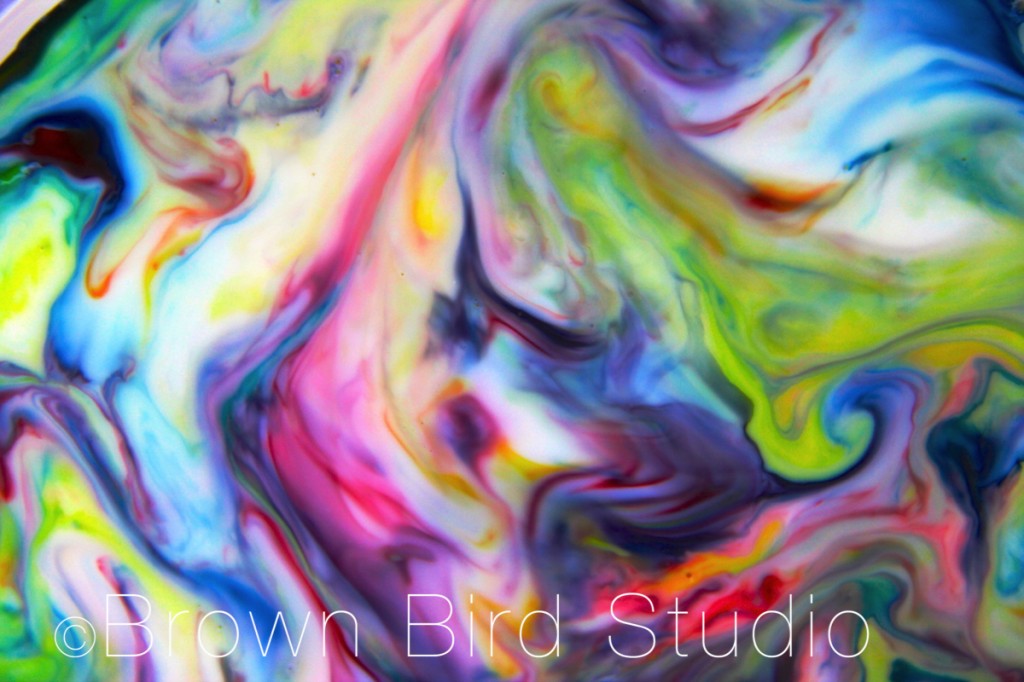 I saw this idea on Photojojo a couple of days ago and immediately thought of doing this with Adia, who is very good at math and science. When I suggested this fun experiment for today, she was all over it! She remembered seeing the project on a website she called “Science Steve.” Here is an excerpt from Steve’s post about this Color Changing Milk:
I saw this idea on Photojojo a couple of days ago and immediately thought of doing this with Adia, who is very good at math and science. When I suggested this fun experiment for today, she was all over it! She remembered seeing the project on a website she called “Science Steve.” Here is an excerpt from Steve’s post about this Color Changing Milk:
The secret of the bursting colors is the chemistry of that tiny drop of soap. Dish soap, because of its bipolar characteristics (nonpolar on one end and polar on the other), weakens the chemical bonds that hold the proteins and fats in solution. The soap’s polar, or hydrophilic (water-loving), end dissolves in water, and its hydrophobic (water-fearing) end attaches to a fat globule in the milk. This is when the fun begins.
The molecules of fat bend, roll, twist, and contort in all directions as the soap molecules race around to join up with the fat molecules. During all of this fat molecule gymnastics, the food coloring molecules are bumped and shoved everywhere, providing an easy way to observe all the invisible activity. As the soap becomes evenly mixed with the milk, the action slows down and eventually stops.
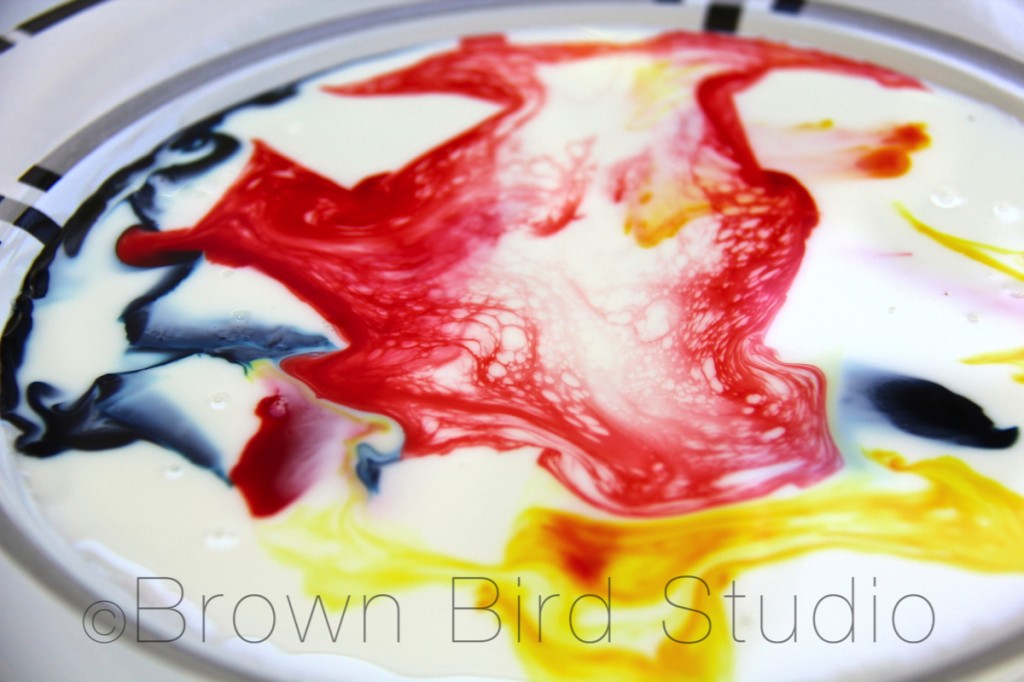 Steve’s description of this experiment explains that it’s important not to stir the colors and the milk with the cotton swabs, but Adia couldn’t stop herself. She seemed much more interested in seeing what would happen when you stir all the colors together (you get a grayish tan color that looks totally unappetizing!)
Steve’s description of this experiment explains that it’s important not to stir the colors and the milk with the cotton swabs, but Adia couldn’t stop herself. She seemed much more interested in seeing what would happen when you stir all the colors together (you get a grayish tan color that looks totally unappetizing!)
I convinced Adia to let me to take photos along the way, before the colors were all mashed together. Aren’t these cool? The blue one looks a little like an angry face.
What You Will Need
- Whole or 2% milk (must have some fat for the science to work)
- Dinner Plate
- Food coloring (red, blue, green, yellow. We also used Neon colors)
- Dish-washing soap (We used Ivory Liquid, but some sites say Dawn works best)
- Q-tips (cotton swabs)
How to Make your Milk Swirl Paintings
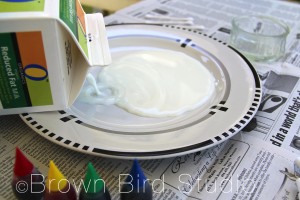
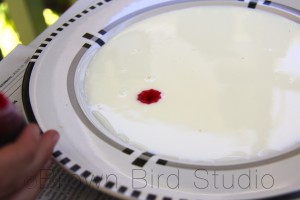
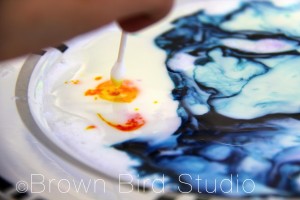
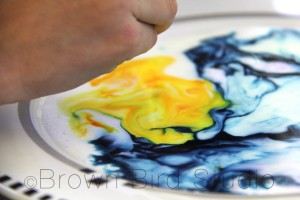
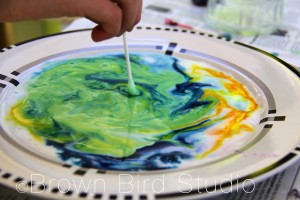
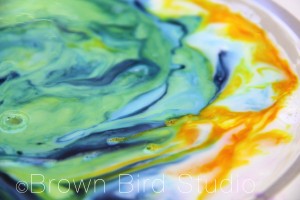
Photojojo has a very clear, short video showing how to do this science/art project
Steve Spangler’s Science Experiment, Color Changing Milk. He even has a section on tips to turn this fun activity into a science fair experiment.
Here is a detailed description with great progress photos, of Steve’s color-changing-milk experiment.
